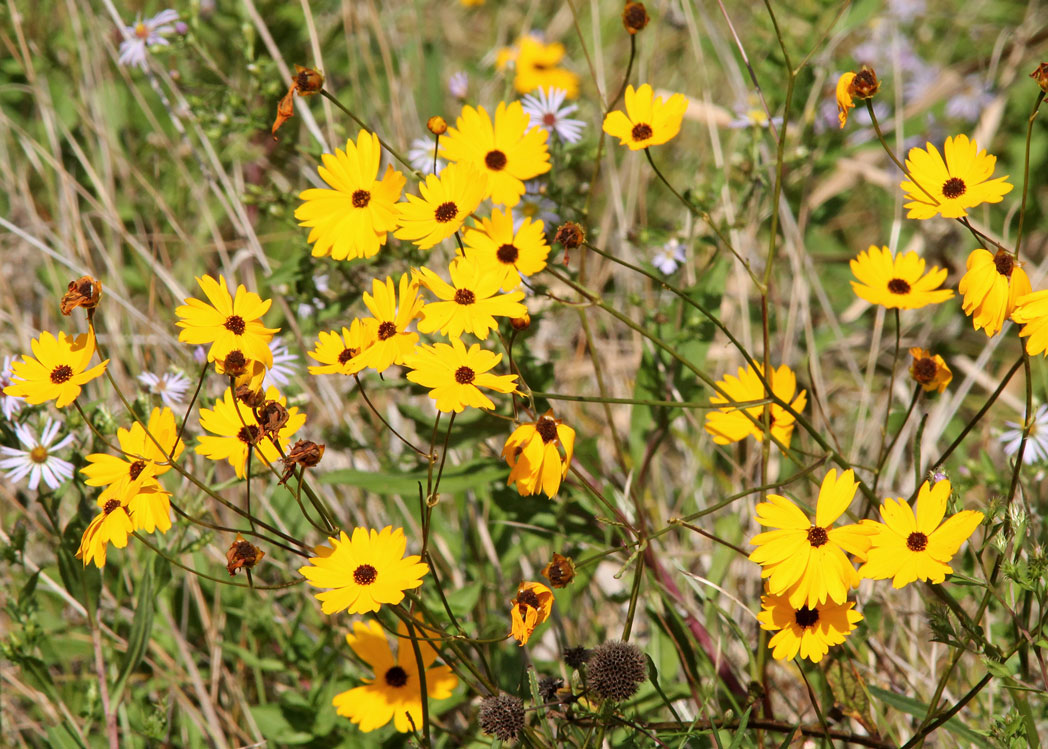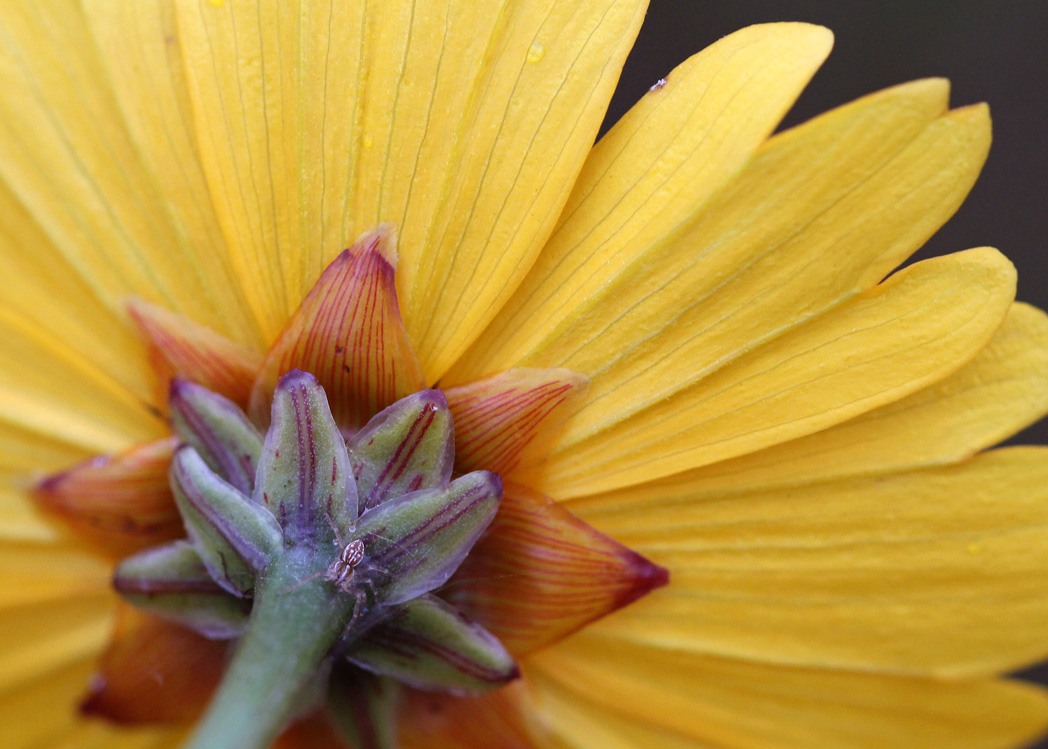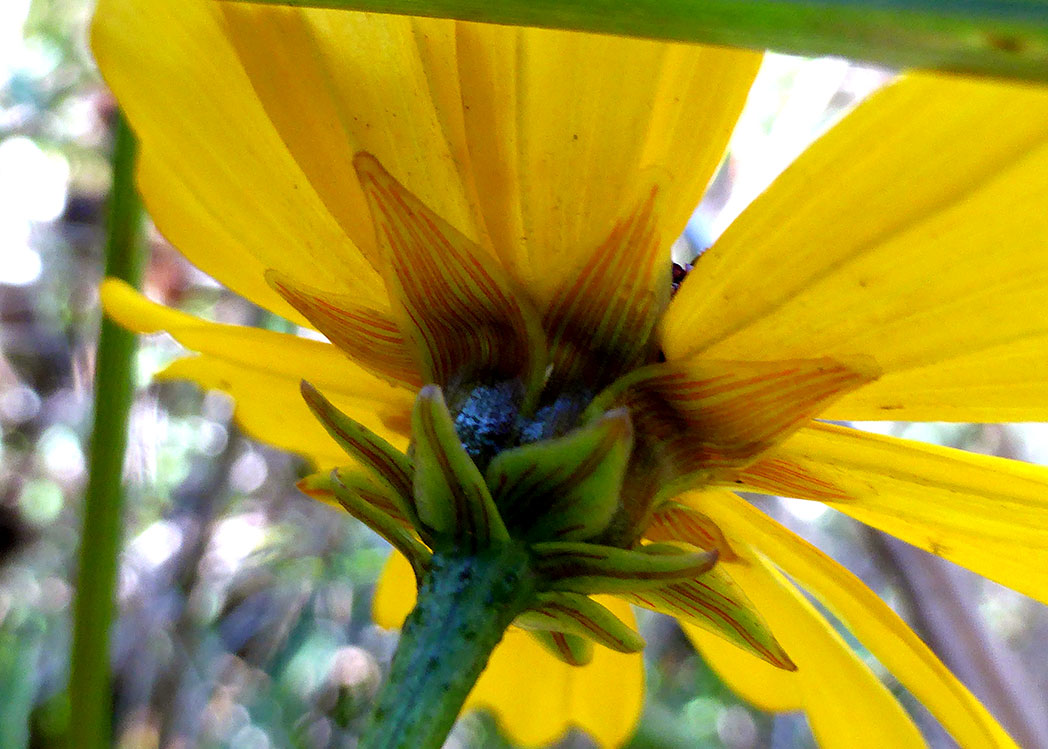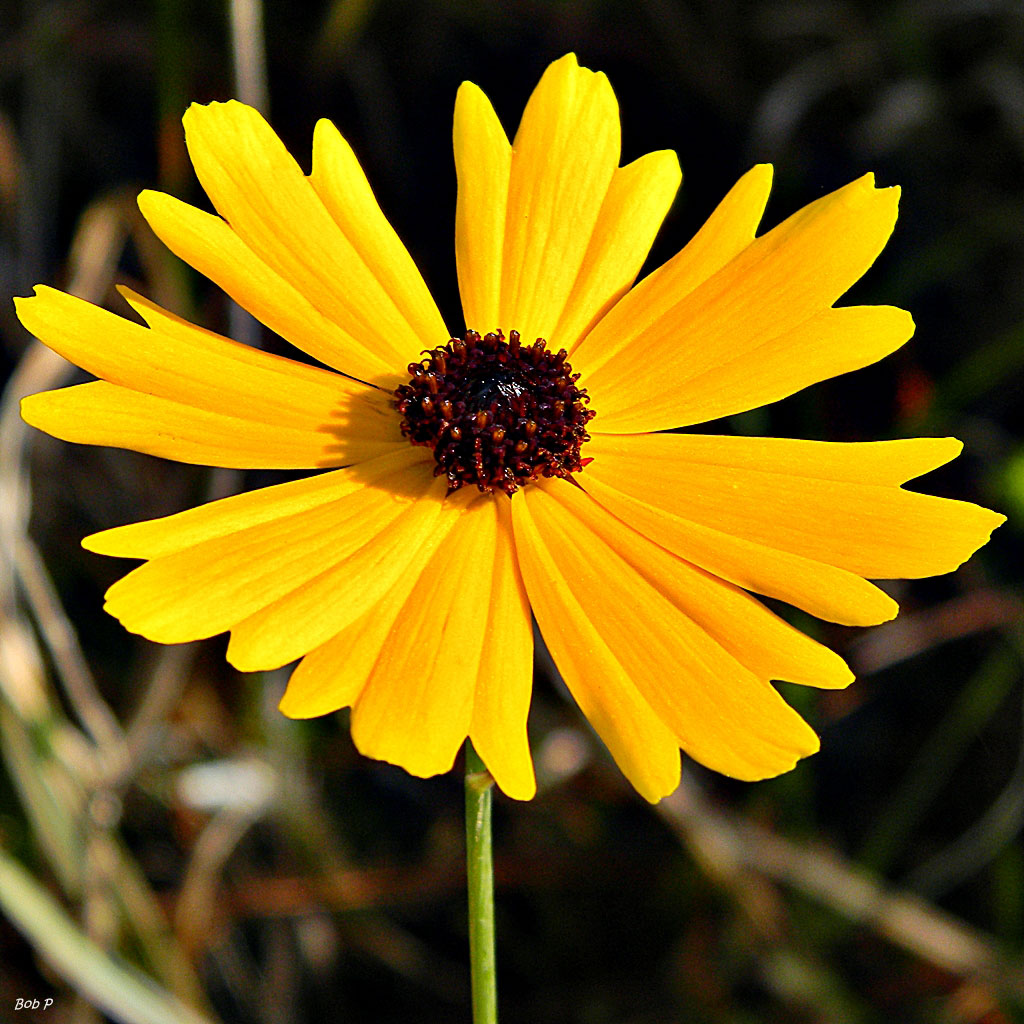Florida tickseed
Florida tickseed (Coreopsis floridana) by Bob Peterson (CC BY 2.0). Click on terms for botanical definitions. View post as a PDF
Florida tickseed is one of 12 Coreopsis species native to Florida. It is endemic to the state and occurs naturally in wet pinelands and prairies, cypress swamp edges and roadside ditches. It typically blooms from late summer into early winter, but may bloom year-round. Its bright sunny flowers attract a variety of pollinators, especially butterflies.

A patch of Florida tickseed (Coreopsis floridana) blooms in Orlando Wetlands Park in Orange County. Photo by Mary Keim
Florida tickseed’s ray florets are golden yellow with lobed or notched apices. Disk florets are dark brown. Two layers of deltoid-shaped bracts support the flowerhead. Bracts in the outer layer are light green with reddish-purple stripes, while inner layer bracts are almost colorless with many thin reddish stripes. Leaves are elliptic to spatulate with entire margins. They may be clasping or stalked, and become reduced in size as the ascend the stem. Arrangement is alternate. Leaf surface may be glabrous or finely pubescent. Seeds are born in inconspicuous achenes.


Florida tickseed (left) can be distinguished from Coastalplain tickseed (right) by its shorter, more triangular bracts.
Photos by Mary Keim (left) and Eleanor Dietrich (right)
Florida tickseed is nearly identical to Coastalplain tickseed (C. gladiata). The two can be distinguished by their bracts; Coastalplain tickseed’s are longer and lanceolate.
Coreopsis is Florida’s state wildflower and includes all native Coreopsis species that occur here. The genus name is derived from the Greek koris, meaning “bug,” and opsis, meaning “view.” It refers to the seed’s tick-like shape and is also the source of the plant’s common name “tickseed.”
Family: Asteraceae (Aster, composite or daisy family)
Native range: Nearly throughout, more common in Central and South Florida
To see where natural populations of Florida tickseed have been vouchered, visit florida.plantatlas.usf.edu.
Hardiness: Zones 8B–10B
Lifespan: Perennial
Soil: Moist to wet, seasonally inundated sandy soils
Exposure: Full sun
Growth habit: 2–3’ tall
Propagation: Seed
Garden tips: Plant Florida tickseed in wildflower or butterfly gardens that stay consistently moist such as along open wetland edges. Or try it in a container with poor or no drainage. The plant does not tolerate drought or salty conditions.
Plants are occasionally available from nurseries that specialize in Florida native plants. Visit www.PlantRealFlorida.org to find a nursery in your area.

